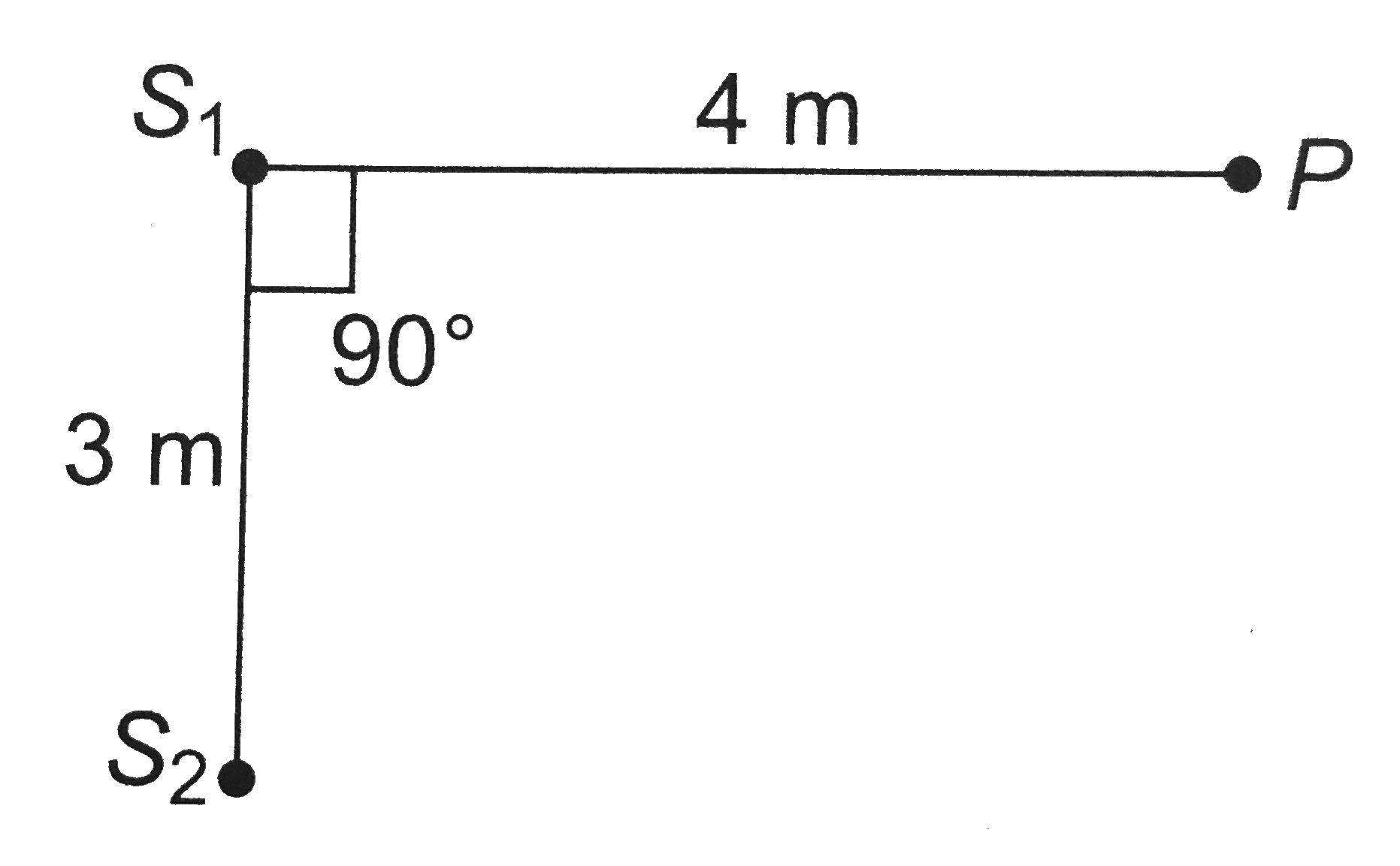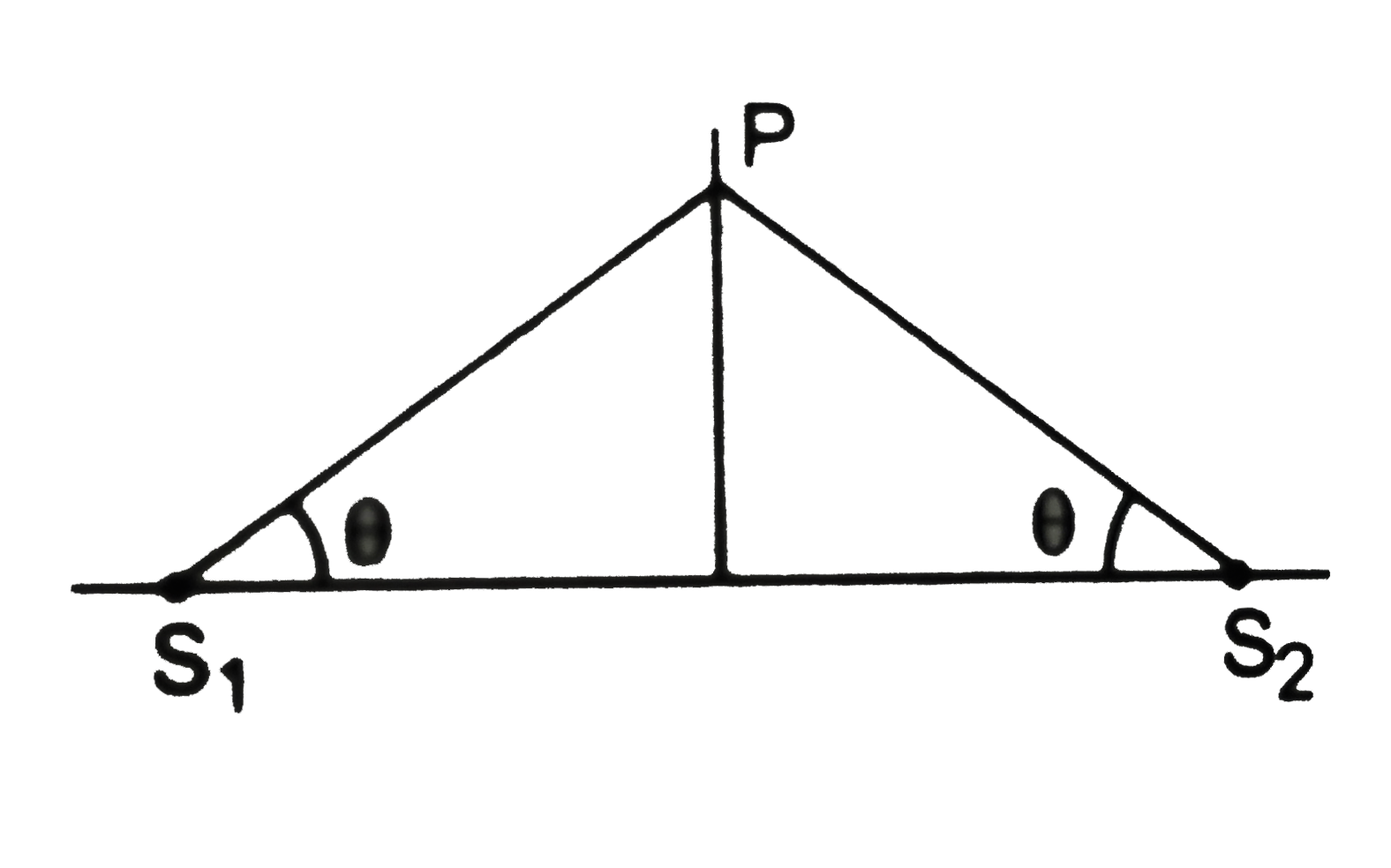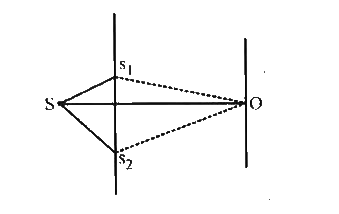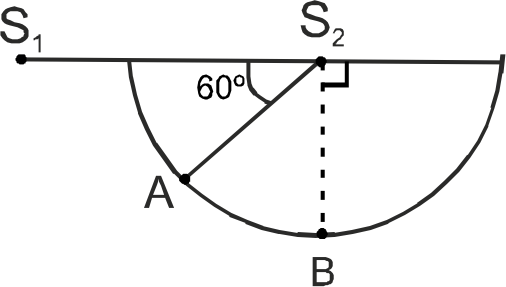Three sources of sound S1,S2andS3ofequal∫ensityareplaced∈astraightl∈ewithS_1S_2=S_2=S_3.Atap∮P.farawayomthesources,thewavecomingomS_2 si 120^@ahead∈phaseoftˆomS_1.Also,thewavecomingomS_3 is 120^@aheadoftˆomS_2. What would be the resultant intensity of sound at P?

Because the 3 sources have equal intensity, amplitude are equal
So, A1=A2=A3
amplitude of the resultant =0
(vector method)
So the resultant intensity at B is zero.
Topper's Solved these Questions
- SOUND WAVESBOOK - HC VERMACHAPTER - SOUND WAVESEXERCISE - Objective -2
5 Videos
- SOME MECHANICAL PROPERTIES OF MATTERBOOK - HC VERMACHAPTER - SOME MECHANICAL PROPERTIES OF MATTEREXERCISE - Exercises
32 Videos
- SPECIFIC HEAT CAPACITIES OF GASESBOOK - HC VERMACHAPTER - SPECIFIC HEAT CAPACITIES OF GASESEXERCISE - Exercises
35 Videos
Similar Questions
Three sources of sound S1,S2 and S3 of equal intensity are placed in a straight line with S1S2=S2S3 shown in the figure. At a point P, far away from the sources, the wave coming from S2 is 120∘ ahead in phase of that from S1, Also, the wave coming from S3 is 120∘ ahead of that from S2. What would be the resultant intensity of sound at P ?

View SolutionIf S1,S2,S3 are the sums to n, 2n, 3n terms respectively for a GP then prove that S1,S2−S1,S3−S2 are in GP.
View Solution
Knowledge Check
A coherent light is incident on two paralle slits S1andS2. At a point P1 the frings will be dark if the phase difference between the rays coming from S1andS2 is
Anπ radiansB(n+0.5)π radiansC(2n+0.5)π radiansD(2n+1)π radians
S1 and S2 are two coherent sources of sound of frequency 110Hz each they have no initial phase difference. The intensity at a point P due to S1 is I0 and due to S2 is 4I0. If the velocity of sound is 330m/s then the resultant intensity at P isAI0B9I0C3I0D8I0Two sources of sound S1andS2 vibrate at same frequency and are in phase. The intensity of sound detected at a point P as shown in the figure is I0 . (a) If theta equals 45∘, what will be the intensity of sound detected at this point if one of the sources is switched off ? (b) What will be the answer of the previous part if θ=60∘ ?
 AI04,I02BI02,3I04CI04,I04DI02,I04
AI04,I02BI02,3I04CI04,I04DI02,I04
Two sources of sound, S1andS2 , emitting waves of equal wavelength 20.0 cm, are placed with a separation of 20.0 cm between them. A detector can be moved on a line parallel to S_1S_2 and at a distance of 20.0 cm from P it. Initially, the detector is equidistant from the two sources. Assuming that the waves emitted by the sources are in phase, find the minimum distance through wffich the detector should be shifted to detect a minimum of sound.
View SolutionIn an interference experiment, the two slits S1andS2 are not equidistant from the source S. then the central fringe at 0 will be

View SolutionTwo source of sound, S1 and S2, emitting waves of equal wavelength 2cm, are placed with a separation of 3cm between them. A detector can be moved on a line parallel to S1S2 and at a distance 24cm from it. Initially, the detecor is equidistant from the two sources. Assuming that the waves emitted by the sources are in phase, find the minimum distance through which the detector should be shifted to detect a minimum of sound.
View SolutionThe intensity of a sound wave 20 m away from the sound source is 3nW/m2. Find the intensity of the wave 32 m away from the source, if the half -thickness for sound of this frequency is 120 m.
View SolutionFigure shows two line sources of sound, S1andS2 separated by a distance 4 m.The two sources are in same phase at all times.The source emit same power and their lengths are also same.A detector moves along a circle with center at S2 and radius 3m. The wavelength of the sound is 1m.When it is at A the intensity of sound due to source S2 only is I0.

The intensity o sound of B due to S1andS2 is :
View Solution
